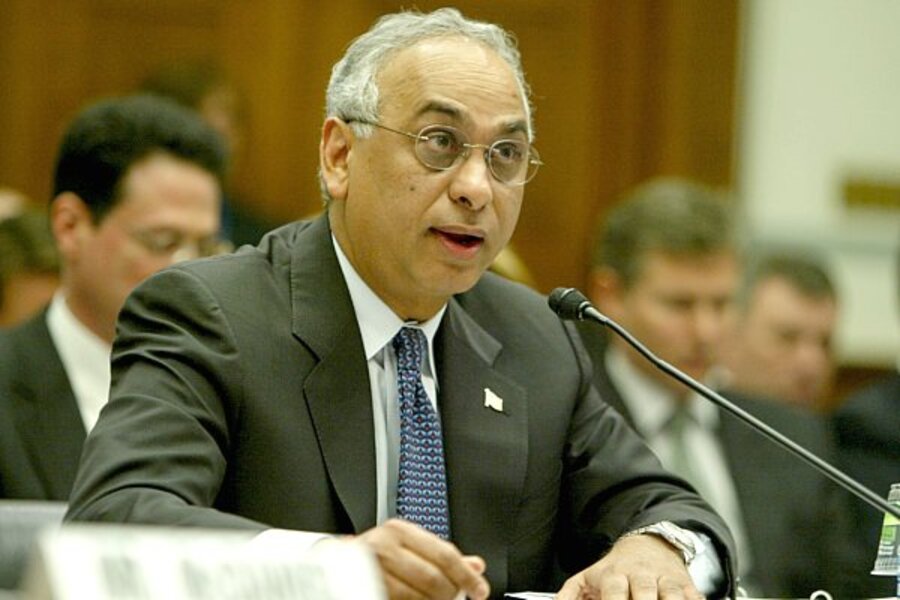US debt downgrade is possible, not inevitable
Loading...
The head of a major credit-rating firm delivered a "good news, bad news" message on Wednesday, telling Congress that the US needs fiscal reform but that America might be able to keep its triple-A credit rating.
The good news: Deven Sharma, president of Standard & Poor's, said a plan for deficit reduction in the range of $4 trillion over the next 10 years could allow his firm to maintain its AAA rating on debts issued by the US Treasury.
Groups such as President Obama's bipartisan fiscal commission have charted plans on that scale – cutting federal deficits roughly in half – and in recent weeks, Mr. Obama and House Speaker John Boehner have discussed the possibility of such a "grand bargain" to fix US finances.
The bad news: Sharp partisan differences are dimming hopes for a fiscal-reform package on that scale. It now appears likely that a vote to raise the so-called debt ceiling (a cap on Treasury borrowing) above $14.3 trillion will be paired with a smaller-scale plan for deficit reduction worth perhaps $2 trillion or $3 trillion.
Moreover, if Congress fails to strike any deal that raises the debt ceiling by Aug. 2, finance experts generally expect that firms like Standard & Poor's would move to downgrade the US rating. That could result in higher interest rates, not just for the Treasury but also for other types of borrowers, from businesses to buyers of homes and cars.
Mr. Sharma of S&P made his comments during a hearing of a House Financial Services subcommittee. The meeting focused largely on regulation of the credit-rating industry, but the looming risk of a US default brought concern about the federal government's own rating to the forefront.
Rep. Scott Garrett (R) of New Jersey asked Sharma if he thought that deficit reduction totaling less than $4 trillion would be able to maintain the AAA rating.
"I would leave that to our analysts to determine that," Sharma responded. He said S&P is waiting to see a definitive policy before passing judgment.
What's clear, however, is that S&P and other rating agencies view the current US path as unsustainable. High federal deficits have pushed America's total debt rapidly upward, and without a course correction, that trend is poised to continue, largely because of baby boomer retirements and rising interest costs.
Sharma noted that even a AAA credit rating (S&P's highest) does not mean the US will not default on its debt. It's just a signal that the risk is very low. Conversely, a move to downgrade the US by a notch or more wouldn't signal that default is expected, just that the risk has risen.
The Dow Jones Industrial Average fell sharply on Wednesday (closing near 12300), in part because of signs of cooling in corporate earnings but also because of concern over the protracted debt-ceiling impasse in Washington.





